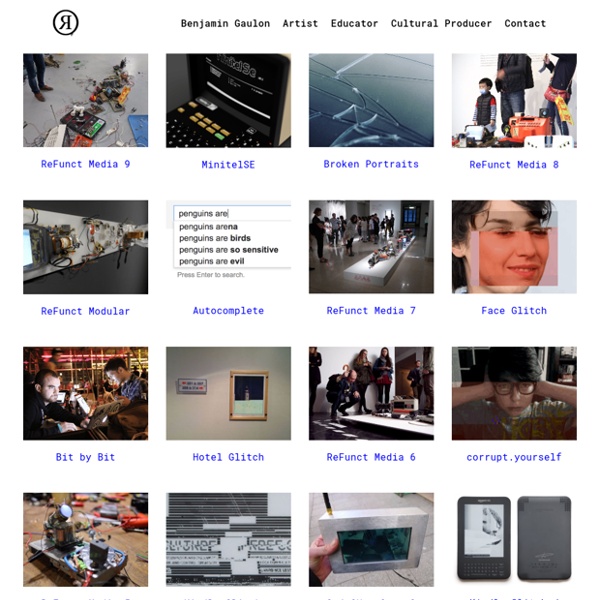



Raphaël Gouisset | Théâtre Numérique Au sein des Particules, j’explore les possibilités et les manières d’intégrer le numérique et plus particulièrement le web à l’art vivant.Pour la saison 2018/19 je suis artiste associé à la Manufacture Centre Dramatique National Nancy Lorraine. Quand je ne passe pas mon temps caché derrière mon écran, je crée des mondes théâtraux dans lesquels je peux évoluer. Adepte de désossage d’ordinateurs et d’errances sans fin sur le Net, je fabrique du théâtre numérique. Ou du numérique théâtral. Peu importe.À travers différentes formes, parfois spectacles, parfois performances, parfois installations, j’explore les enjeux des révolutions numériques actuelles. I create digital theater. My shows avalaible in English are Worldwidewestern and Robots.
dedalemusic Barthélemy Antoine-Lœff - media artist and performer Hémisphère Hémisphère est un atelier de dispositifs numériques. Il prend la forme d’un groupement d’ingénieurs, développeurs multimédia et designers interactifs. Nous travaillons en étroite relation avec des artistes, scénographes, musées, designers et auteurs du numérique, et prenons en charge la réalisation de leurs besoins en matière de dispositifs numériques s’intégrant à leur scénographie. Hémisphère naît d’une volonté commune de mutualiser un savoir et des savoir-faire, de créer une circulation des connaissances, de constituer un dialogue et une expertise mise au service des auteurs dans tous les champs de la création contemporaine. Enfin, cette ambition de mutualisation du savoir n’étant pas limitée au cercle de ses acteurs, nous souhaitons, tant que faire se peut, mettre les sources des projets produits par Hémisphère à disposition de la communauté. • Alain BarthélémyIngénieur Multimédiaalain@hemisphere-project.com • Matthias ImbertIngénieur, Développeur Webmatthias@hemisphere-project.com
Ludicart l'art interactif de Jean-Robert Sédano et Solveig de Ory Fred Périé / nouveaux médias & installations en plein air AVOKA OMPRODUCK THE PIRATE CINEMA - A CINEMATIC COLLAGE GENERATED BY P2P USERS Hotel Modern La chambre des machines | Nicolas Bernier + Martin Messier YRO | installations, performances and exhibitions scenocosme art numérique interactif, création artistique, installation immersive innovante Collectif INVIVO